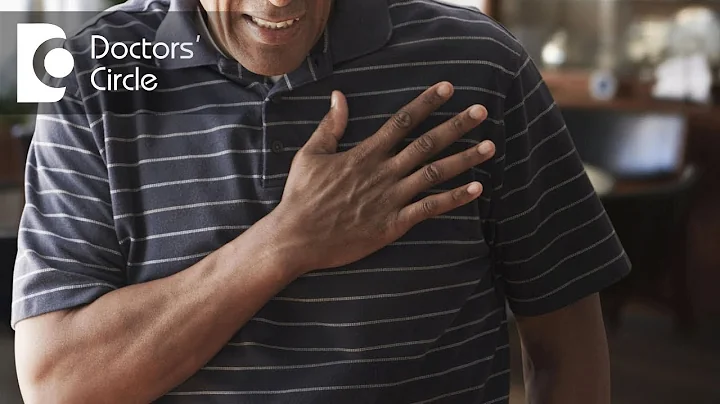Chest tightness . Can't breathe, my chest feels like a big stone is pressing on it, my hands are shaking, I can't speak... Does it sound familiar? After all, anger, cerebral infarction, are all played this way in TV dramas.
However, if this happens in reality and continues to happen, then you must pay attention! It is recommended that you go to the cardiology department for treatment, because it may not be as simple as "being angry", or even caused by coronary heart disease , it may be congenital heart disease !
Recently, Mr. Li, who lives in , Xiaodian District, came to Taiyuan Central Hospital for treatment because of the above symptoms. Mr. Li thought it was a cerebral infarction, but upon investigation, it turned out that the atrial septum in his heart had been defective for 32 years! Speaking of this, I have to sigh with emotion. The ever-changing medical technology has really solved many problems for mankind. You see, there is no thoracotomy and no blood transfusion involved. A small minimally invasive interventional surgery helped Mr. Li make up for what he was missing. 32 years of "heart wall".
Seeking medical treatment for "cerebral infarction", unexpectedly discovered that the "culprit" was "someone else"
html On May 26, 32-year-old Mr. Li visited the Neurology Department of Taiyuan Central Hospital due to numbness in his left upper limb and slurred speech. After the examination, I accidentally discovered that I had " atrial septal defect ".What is atrial septal defect?
The heart is an organ that transports blood to all parts of the body. The interatrial septum is the "wall" that separates the left atrium and right atrium where blood circulates in the heart. After an atrial septal defect, blood flows from the left atrium to the right atrium, causing the load and volume of the right atrium and right ventricle to increase, causing the patient to experience symptoms such as chest tightness and dyspnea. Over time, it may even cause right heart failure and pulmonary artery disease. High-voltage , etc., directly threaten the patient's life.
Logically speaking, atrial septal defect is a congenital disease, so why has it not been discovered in 32 years? If the heart is compared to a machine, then this machine was running at high load before, but now the "loss" is serious, and the symptoms are also manifesting.
After examination, Mr. Li's echo was interrupted in the middle of the atrial septum, and the echo was enhanced at the broken end, with a diameter of about 17 mm. There was no right-to-left shunt, and the marginal condition was good. Timely closed umbrella repair of the atrial septal defect can solve the problem.
Minimally invasive repair of "atrial septum"
Since the problem is the heart, is it possible that Mr. Li will have a "chest-opening" experience next? Of course not, medical technology is advancing with each passing day, and it is already possible to use to intervene in for treatment.
Closed umbrella repair surgery for atrial septal defect may seem simple, but there are risks of complications such as cardiac perforation, thromboembolism, and occluder detachment. The operator must perform the operation steadily and accurately. In addition, selecting an occluder according to the shape of the atrial septal defect under cardiac color ultrasound is also the top priority of the operation. Occluders with inappropriate specifications will affect adjacent structures, cause discomfort to the patient, and reduce the efficacy. Therefore, this is an ideal surgical procedure. Both pre-planning and intraoperative operations require high standards and high requirements for surgery.
html On June 13, the team of Director Ma Dengfeng of the Department of Cardiology at Taiyuan Central Hospital performed a closed umbrella closure of the atrial septal defect on Mr. Li. In just 40 minutes, the operation was successfully completed. After ultrasound examination, the closure effect was good.After the operation, Mr. Li said that the operation went very smoothly without any discomfort and the chest tightness symptoms had completely disappeared.
Atrial septal defect closure : A treatment method with both curative effect and minimal invasiveness
It is understood that atrial septal defect is caused by abnormalities in the development, absorption and fusion of the atrial septum during embryonic development, accounting for approximately all congenital heart diseases. 10%, one of the most common congenital heart diseases.
In terms of treatment, the interventional closure of atrial septal defect performed by the Department of Cardiology is a treatment method that is both effective and minimally invasive. Under the condition of excluding other combined malformations and strictly controlling the indications, the atrial septal defect with appropriate conditions and size can be treated The success rate of defect treatment is extremely high. Early repair can significantly reduce the incidence of pulmonary hypertension and right heart failure and achieve a curative effect. Those with large defects that are not treated in time will have a poor prognosis. At present, the Department of Cardiology of Taiyuan Central Hospital can independently perform such surgeries.
Discipline leader

Ma Dengfeng
Chief physician, master's tutor, Director Fendong of the Department of Cardiology, Taiyuan Central Hospital, has been engaged in the clinical diagnosis and treatment of cardiovascular intervention and heart failure. Member of the Heart Failure Group of the Cardiovascular Branch of the Chinese Medical Association, National Chest Pain Center Certification Verification Expert, founder of the Shanxi Xinxiwang Interventional Team, member of the Chest Pain Committee of the Shanxi Medical Doctor Association, member of the CTOCC, member of the veteran team, and cardiovascular interventional expert of the Shanxi Medical Doctor Association Vice Chairman of the Youth Committee of the Committee, Standing Member of the Cardiac Critical Care Professional Committee of the Shanxi Medical Doctors Association, and Standing Member of the Cardiovascular Disease Branch of the Shanxi Continuing Medical Education Association. He has presided over 2 provincial and municipal projects and published more than 20 papers.
is good at the interventional diagnosis and treatment of coronary heart disease. He has rich experience in the diagnosis and treatment of acute myocardial infarction, complex coronary heart disease interventional treatment, and interventional treatment of chronic occlusive coronary heart disease. He has guided and assisted many medical centers in Shanxi Province to carry out interventional diagnosis and treatment of cardiovascular disease. .
Source: Taiyuan Central Hospital





















